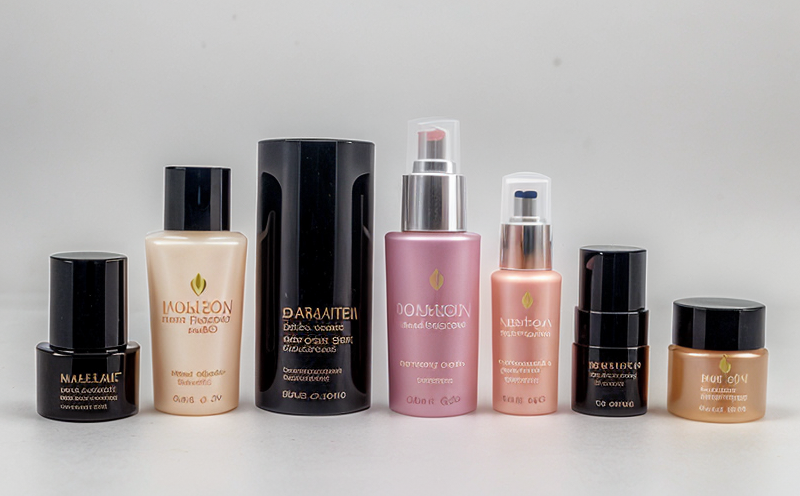Silicone Migration Testing in Cosmetic Packaging
When it comes to ensuring product safety and regulatory compliance, silicone migration testing is a critical process within the cosmetics sector. Silicone, widely used for its versatility and aesthetic appeal in cosmetic packaging, can potentially migrate into the cosmetic products during storage or use. This migration may lead to changes in the formulation, affecting both the efficacy and safety of the cosmetic.
Understanding silicone’s chemical properties is essential. Silicones are a class of polymeric compounds containing silicon (Si) atoms linked by oxygen (O) atoms, often referred to as polymers with pendant alkyl or aryl groups. Silicone’s unique physical and chemical characteristics make it a popular choice for cosmetic packaging due to its flexibility, breathability, and resistance to heat and chemicals.
However, the potential for silicone migration into the product necessitates rigorous testing to ensure that the final product remains safe for consumers. This is where our specialized testing service comes in. By leveraging advanced analytical techniques and international standards, we provide comprehensive and accurate silicone migration testing services tailored to meet the unique requirements of cosmetic packaging.
In the context of the cosmetics sector, ensuring product safety and compliance with regulations such as ISO 21976-4 is paramount. This standard provides guidelines for testing the migration of silicones from containers into contents. By adhering to these standards, we ensure that our clients can confidently market their products globally.
The process involves several critical steps: specimen preparation, analysis using appropriate instrumentation such as gas chromatography coupled with mass spectrometry (GC-MS), and interpretation of results against established limits. Our team of experts ensures that each step is meticulously executed to yield reliable data.
| Process Stage | Description |
|---|---|
| Specimen Preparation | The cosmetic sample is prepared by removing the packaging and separating it from the product. The packaging material undergoes further processing to ensure uniformity. |
| Migration Simulation | The prepared specimen is subjected to conditions that simulate real-world usage, including temperature cycling and exposure to various solvents. |
| Analytical Techniques | Gas Chromatography-Mass Spectrometry (GC-MS) is used for the identification and quantification of silicone compounds migrating into the product. |
| Interpretation and Reporting | The results are analyzed against established limits, and a detailed report is prepared outlining compliance status or any areas requiring further investigation. |
Scope and Methodology
- Specimen Preparation: The cosmetic sample is carefully removed from its packaging to ensure accurate testing of the silicone migration.
- Migration Simulation: Specimens are subjected to temperature cycling and exposure to various solvents to simulate real-world conditions.
- Analytical Techniques: GC-MS is used for precise identification and quantification of silicone compounds migrating into the product.
- Interpretation and Reporting: Results are rigorously analyzed against established limits, and a comprehensive report is provided.
Benefits
The benefits of our silicone migration testing service extend beyond compliance with regulations. By ensuring that silicones do not migrate into the cosmetic products in excessive amounts, we help clients:
- Avoid potential health risks associated with silicone contamination.
- Ensure product efficacy and stability by maintaining consistent formulation.
- Earn consumer trust through transparent and reliable testing processes.
- Comply with international standards such as ISO 21976-4, enhancing market access.
In the long term, these benefits translate into improved brand reputation and increased customer satisfaction. Our service is designed to support clients at every stage of product development and compliance management.
Quality and Reliability Assurance
- We adhere strictly to international standards such as ISO 21976-4 for accurate testing.
- Our team of experts ensures each step is meticulously executed, from specimen preparation to final reporting.
- Advanced analytical instruments like GC-MS provide precise and reliable data.
- We use quality control measures throughout the process to ensure consistency and accuracy.





